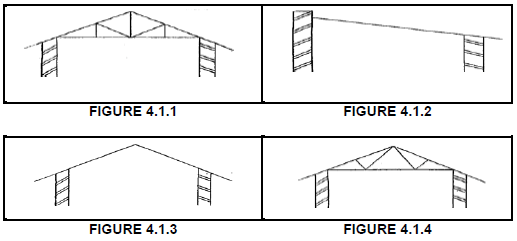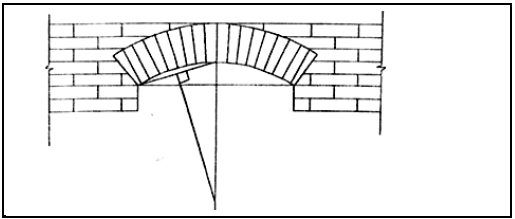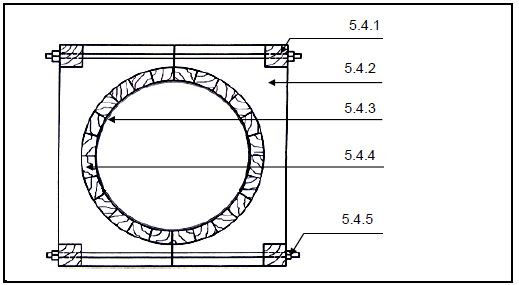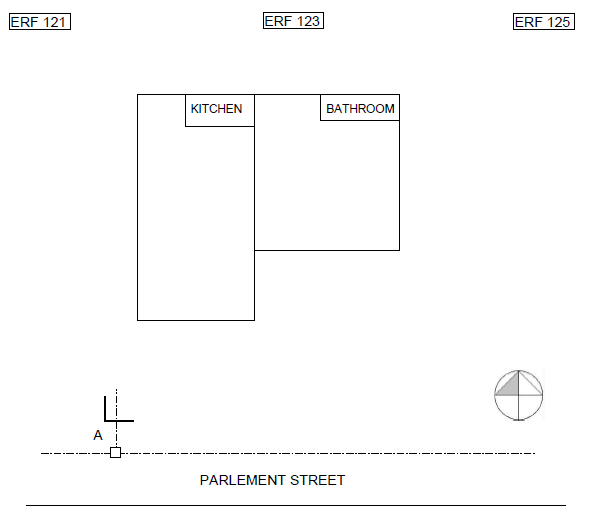CIVIL TECHNOLOGY: WOODWORKING GRADE 12 QUESTIONS - 2018 SEPTEMBER PREPARATORY EXAM PAPERS AND MEMOS
Share via Whatsapp Join our WhatsApp Group Join our Telegram GroupCIVIL TECHNOLOGY: WOODWORKING
GRADE 12
NATIONAL SENIOR CERTIFICATE
SEPTEMBER 2018
REQUIREMENTS:
- ANSWER BOOK
- Drawing instruments
- A non-programmable pocket calculator
INSTRUCTIONS AND INFORMATION
- This question paper consists of SIX questions: TWO questions are generic and FOUR questions are subject specific.
- Answer ALL the questions.
- Answer each question as a whole. Do NOT separate subsections of questions.
- Start the answer to EACH question on a NEW page.
- Do NOT write in the margins of the ANSWER BOOK.
- You may use sketches to illustrate your answers.
- Write ALL calculations and answers in the ANSWER BOOK or on the attached ANSWER SHEETS.
- Use the mark allocation as a guide to the length of your answers.
- Make drawings and sketches in pencil, fully dimensioned and neatly finished off with descriptive titles and notes to conform to the SANS/SABS Code of Practice for Building Drawings.
- For the purpose of this question paper, the size of a brick should be taken as 220 mm x 110 mm x 75 mm.
- Use your own discretion where dimensions and/or details have been omitted.
- Answer QUESTIONS 2.1, 3.5 and 4.4 on the attached ANSWER SHEETS using drawing instruments where necessary.
- Write your NAME on every ANSWER SHEET and hand them in with your ANSWER BOOK, whether you have answered the question or not.
- Due to electronic transfer, drawings in the question paper are NOT to scale.
QUESTION 1: SAFETY, MATERIAL AND EQUIPMENT (GENERIC)
1.1 Indicate whether the following statements with regard to scaffolding are TRUE or FALSE. Write only the word ‘true’ or ‘false’ next to the number in the answer book.
1.1.1 The planks of a solid wooden scaffold platform are at least 228 mm wide. (1)
1.1.2 The planks of a solid wooden scaffold platform may not project more than 250 mm beyond the last prop. (1)
1.1.3 The guard rails must be at least 800 mm high. (1)
1.1.4 Toe boards must be at least 150 mm high. (1)
1.2 Name THREE requirements to which a trestle scaffold must comply with before employers should use it. (3 x 1) (3)
1.3 Briefly motivate why aluminium ladders should not be used near electrical wires. (2)
1.4 Briefly motivate why wooden ladders must not be painted. (2)
1.5 Choose from the descriptions below the FOUR correct descriptions which are applicable to the curing of concrete.
Write only the FOUR correct question numbers in the ANSWER BOOK.
1.5.1 It protects concrete against rust.
1.5.2 Improves the durability of concrete.
1.5.3 It provides a gloss finish to concrete.
1.5.4 Curing is done by means of a tampering rod.
1.5.5 It improves the strength of concrete.
1.5.6 It provides a protective layer over the concrete.
1.5.7 It makes concrete more watertight.
1.5.8 It improves the resistance to abrasion. (4 x 1) (4)
1.6 Describe in point form the powder-coating process for metals. (3)
1.7 Briefly describe ONE use of the dumpy level. (1 x 2) (2)
1.8 FIGURE 1.8 shows the dumpy level reading which is taken on the telescopic staff. Answer the following questions with regard to the reading.
FIGURE 1.8
1.8.1 What is the height reading on the staff? (1)
1.8.2 Determine the distance between the dumpy level and the staff.
Show all calculations, formulas and units. (4)
1.9 Name THREE materials which can be detected in walls by the multi-detector. (3 x 1) (3)
1.10 Name the maintenance measures for the multi-detector with reference to the following facets:
1.10.1 Cleaning method (1)
1.10.2 Storage over a long period (1)
[30]
QUESTION 2: GRAPHICS AND JOINING (GENERIC)
2.1 Use the information on ANSWER SHEET A and complete the site plan on scale 1 : 200 according to the following requirements:
2.1.1 The site boundaries are measured from point A
The site boundaries in front and back are 23 m long
The site boundaries on the sides are 25 m long (2)
2.1.2 The front building line is 4 m from the site boundary
The back and side building lines are 2 m from the site boundaries (2)
2.1.3 Show the site entrance, 3 m from the western site boundary (1)
2.1.4 Show the datum level in the north-eastern corner of the site (1)
Complete the sewage lay-out and abbreviations of the sewage appliances according to the following requirements:
2.1.5 The main sewage from the bathroom to the municipal connection (2)
2.1.6 The branch sewage to the bathroom and kitchen (2)
2.1.7 Manhole on the site, before the municipal connection (2)
2.1.8 Rodding eyes (4)
2.1.9 Inspection eyes (4)
2.2 Name the FOUR particulars of a bolt which must be provided when it is purchased. (4 x 1) (4)
2.3 Briefly describe the advantage of the square shoulder bolt. (2)
2.4 Name the parts 2.4.A to 2.4.D of the bolt in FIGURE 2.4. (4 x 1) (4)
FIGURE 2.4
[30]
QUESTION 3: CASEMENTS, DOORS AND WALL PANELLING (SPECIFIC)
Start the question on a NEW page.
3.1 Answer the following questions with regard to the window frame in FIGURE 3.1.
FIGURE 3.1
3.1.1 Name the parts 3.1.A to 3.1.E. (5 x 1) (5)
3.1.2 What is the purpose of part 3.1.E? (2)
3.1.3 What is the breadth and thickness of part 3.1.E? (2)
3.2 FIGURE 3.2 shows a drawing of a wall-mounted cabinet made out of 16 mm thick melamine chipboard, with a 3 mm thick hardboard back. Butt joints are used in the construction of the cabinet.
FIGURE 3.2
Use the following following specifications:
- One shelf
- Two doors
- The outside measurements of the cabinet is1 200 mm high, 1 800 mm wide and 500 mm deep
- Thickness of chipboard is 16 mm
Determine the sizes of the parts and write down the answer next to the question number (3.2.1–3.2.6) in your ANSWER BOOK. (6)
| DESCRIPTION | AMOUNT | LENGTH | WIDTH | THICKNESS |
| Sides | 2 | 3.2.1 | 500 mm | 16 mm |
| Top | 1 | 3.2.2 | 500 mm | 16 mm |
| Bottom | 1 | 3.2.3 | 500 mm | 16 mm |
| Shelf | 1 | 3.2.4 | 500 mm | 16 mm |
| Doors | 2 | 3.2.5 | 3.2.6 | 16 mm |
3.3 Name ONE joining agent that can be used to fix the following materials in place when finishing off a room:
3.3.1 Cornice (1)
3.3.2 Skirting (1)
3.3.3 Ceiling boards to brandering (1)
3.4 FIGURE 3.4 shows the front view of a hollow-core flush panel door. Study the drawing and complete the incomplete cutting list.
Write down the answer next to the question number (3.4.1–3.4.7) in your ANSWER BOOK. (7)
FIGURE 3.4
| MEMBER | QUANTITY | UNIT | LENGTH | WIDTH | THICKNESS | MATERIAL |
| 3.4.1 | 2 | mm | 2032 | 50 | 38 | SA pine |
| Top rail | 1 | mm | 713 | 3.4.2 | 38 | SA pine |
| Lock block | 2 | mm | 3.4.3 | 50 | 38 | SA pine |
| Plywood | 1 | mm | 2032 | 813 | 3.4.4 | Plywood |
| Bottom rail | 1 | mm | 3.4.5 | 50 | 38 | SA pine |
| Cardboard | 1 | mm | 3.4.6 | 690 | 38 | Chip-board |
| Edging | 1 | mm | 2032 | 44 | 3.4.7 | Meranti |
3.5 Draw on ANSWER SHEET B the completed front elevation of a three-panel door with raised and fielded panels. Use the following specifications:
- Use scale 1 : 10
- Door measurements = 2030 mm x 810 mm
- Top rail = 114 mm x 44 mm
- Bottom rail = 220 mm x 44 mm
- Muntin = 75 mm x 44 mm
- Stile = 144 mm x 44 mm
- Hanging stile = 144 mm x 44 mm
- Lock rail = 220 mm x 44 mm
- Top raised and fielded panel = 16 mm thick
- Bottom raised and fielded panel = 16 mm thick (15)
[40]
QUESTION 4: ROOFS AND CEILINGS (SPECIFIC)
4.1 Identify the type of roof constructions in FIGURES 4.1.1 to 4.1.4. (2)
4.2 Choose a description from COLUMN B that matches the correct item in
COLUMN A. Write only the correct letter (A–K) next to the question number (4.2.1–4.2.10) in the ANSWER BOOK, for example 4.2.11 M. (10 x 1) (10)
| COLUMN A | COLUMN B |
| 4.2.1 Queen post 4.2.2 Batten 4.2.3 IBR- roof sheeting 4.2.4 Purlin size 4.2.5 Gang nailed plate 4.2.6 Truss hangers 4.2.7 Ridge 4.2.8 Wall plate size 4.2.9 Fascia board 4.2.10 Valley |
|
4.3 FIGURE 4.3 shows a detailed sectional view of part of a king post roof truss.
Study the drawing and name the parts 4.3.1 to 4.3.8. (8)
FIGURE 4.3
4.4 Use ANSWER SHEET C and draw to scale1:20 the front view of a king post roof truss.
Use the following specifications:
- Pitch of roof is 30˚
- Length of the tie beam is 3 000 mm
- All timber for roof truss is 114 mm x 38 mm
- Eaves overhang is 250 mm
- Show any THREE labels of the drawing
- Print the title and scale below the drawing (15)
4.5 What is the purpose of a ceiling? (1)
4.6 Briefly describe the purpose of a trap door in a ceiling construction. (2)
[40]
QUESTION 5: CENTERING, FORMWORK, SHORING AND IRONMONGERY (SPECIFIC)
5.1 Explain in your own words the difference between the following:
5.1.1 Dead shoring (2)
5.1.2 Flying shoring (2)
5.2 FIGURE 5.2 shows a type of arch that can be constructed for the purpose of visually enhancing the appearance of buildings. Answer the following questions with regard to arches.
FIGURE 5.2
5.2.1 Briefly describe the purpose of an arch? (2)
5.2.2 Briefly describe the steps that you will follow when setting out a segmental arch. (6)
5.2.3 Name any TWO other types of arches. (2 x 1) (2)
5.3 Answer the following questions with regard to the locks in FIGURES 5.3.A and 5.3.B.
5.3.1 Name the different locks. (2 x 1) (2)
5.3.2 Briefly describe the use of each lock. (2 x 2) (4)
5.4 FIGURE 5.4 shows the formwork for a round concrete column. Name the parts 5.4.1 to 5.4.5 of the formwork.
FIGURE 5.4
(5 x 1) (5)
5.5 FIGURE 5.5 shows a pair of wedges for formwork. Describe the purpose of the wedge pair for formwork construction.
FIGUUR 5.5 (4)
5.6 Briefly motivate why ribbed bars rather than plain round bars will be used as concrete reinforcement. (1)
[30]
QUESTION 6: SUSPENDED FLOOR AND STAIRCASE (SPECIFIC)
6.1 Answer the following questions with regard to the staircase construction in FIGURE 6.1.
FIGURE 6.1
6.1.1 Name the parts 6.1.1 to 6.1.6 of the staircase. (6 x 1) (6)
6.2
6.2.1 What is the maximum height of part 6.1.1? (1)
6.2.2 What is the minimum height of part 6.1.3? (1)
6.2.3 What is die minimum length of part 6.1.5? (1)
6.3 Choose a description from COLUMN B that matches the correct item in
COLUMN A. Write only the correct letter (A–E) next to the question number (6.3.1–6.3.5) in the ANSWER BOOK, for example 6.3.6 F.
| KOLOM A | KOLOM B |
| 6.3.1 Baluster 6.3.2 Handrail 6.3.3 Landing 6.3.4 Half landing 6.3.5 String |
|
(5 x 1) (5)
6.4 Describe the function of the following members of suspended wooden floors.
6.4.1 Airbricks (2)
6.4.2 Bearers (2)
6.4.3 Ant guard (2)
6.5 FIGURE 6.5 shows a part of a suspended wooden floor. Name parts 6.5.1–6.5.6.
FIGURE 6.5
(6 x 1) (6)
6.6 Briefly motivate why all the debris below the suspended timber floor must be removed. (2)
6.7 What are the length and width measurements of an air brick? (2)
[30]
TOTAL: 200
2.1 Use the information on ANSWER SHEET A and complete the site plan to scale 1 : 200.
| Site boundaries | 2 |
| Building lines | 2 |
| Site entrance | 1 |
| Datum level | 1 |
| Main sewerage | 2 |
| Branch sewerage | 2 |
| Manhole | 2 |
| Rodding eyes | 4 |
| Inspection eyes | 4 |
| TOTAL | 20 |
3.5 Draw on ANSWER SHEET B the completed front elevation of a three-panel door with raised and fielded panels. (15)
_________________________________________________
X
| Scale | 1 |
| Top rail | 2 |
| Lock rail | 2 |
| Panels | 3 |
| Bottom rail | 2 |
| Stiles | 3 |
| Measurements | 2 |
| TOTAL | 15 |
4.4 Use ANSWER SHEET C and draw to scale1 : 20 the front view of a king post roof truss. (15)
_________________________________________________
X
| Rafter | 2 |
| King post | 1 |
| Tie beam | 1 |
| Title | 1 |
| Scale in print | 1 |
| Neatness | 2 |
| Scale | 4 |
| Labels | 3 |
| TOTAL | 15 |